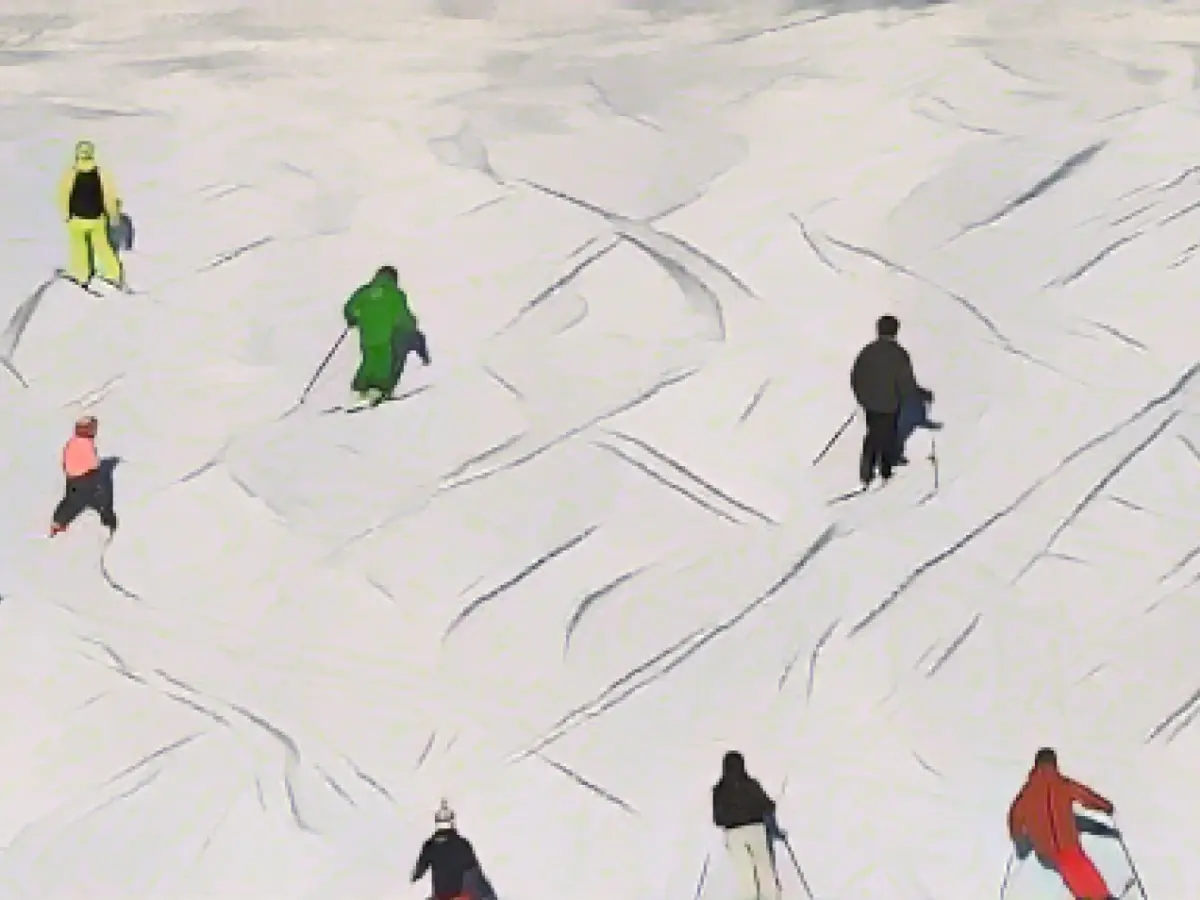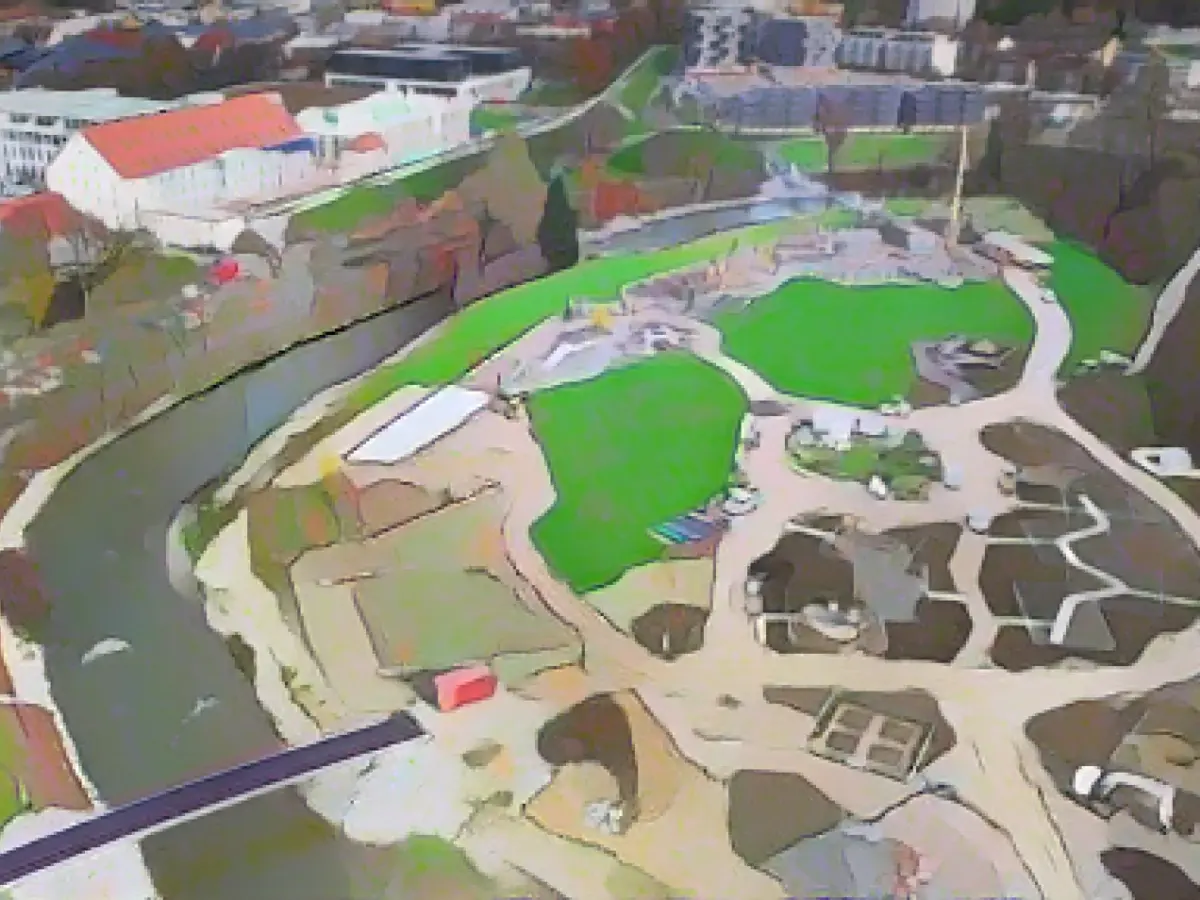Despite the looming threat of climate change and diminishing snowfall, Alpine winter holiday resorts are less likely to meet an untimely end in the years to come. Snow cannons and an uptick in alternative winter sports have kept the industry afloat, as confirmed by both scientific research and the vacation sector.
Munich-based tourism expert Jürgen Schmude acknowledged that winter sports tourism would wane in significance, but winter tourism as a whole would persist. Although the Alps witness a decrease in snowfall compared to the past, a season without snow isn't an impending reality.
The Alps' snow cover has been dwindling, with less snow falling than before in Austria—an average of 40 fewer snowy days annually at all altitudes, as revealed by a ZAMG research project. Nevertheless, overlooked winter activities and artificial snow production have allowed ski resorts to maintain their operations during dry periods.
Winter holiday destinations like Lenggries in Bavaria experienced temporary closures due to the absence of snow during the 2022/23 winter season. However, other popular Alpine resorts like Oberstdorf in Bavaria, and Allgäu locations such as Bad Hindelang, Füssen, and Oberstaufen continued to report similar booking figures as the previous year.
Vacationers have been adjusting to shorter stays either due to financial constraints or personal preferences. Winter vacations remain a financially viable sector since individual skiers are typically more profitable for resorts than summer tourists.
Up north, in areas like St. Moritz and Engadin, hotels have reported an exceptionally strong booking situation for the upcoming holiday season. According to tourism researcher Schmude, this phenomenon might mean a spatial concentration of resorts in larger, higher-altitude destinations, at the expense of smaller, lower-lying ski resorts.
Climate change has induced new challenges in the Alpine ski resorts, including dry summers and erratic snow seasons. Additionally, a 2022 international research collaboration highlighted that climate change intensifies the problems faced by ski resorts, such as snowcover erosion, water supply, and energy usage.
However, experts believe that resorts with snowmaking facilities at least cover half of their slopes are less vulnerable to climate change. Such investments result in higher operating expenses, which get passed on to the guests in the form of increased ticket prices.
In the industry's defense, winter guests have always been more profitable for ski resorts in the Alps. To mitigate the effects of demographic change, resorts have proactively recruited more young staff in various winter sports instruction programs.
In conclusion, Alpine ski resorts are thriving in the face of adversity by utilizing artificial snowmaking, modifying terrains, diversifying winter activities, and leveraging sustainable practices. However, without a concerted effort to combat climate change, the long-term sustainability of conventional winter sports in the Alps remains uncertain.
Source:
Additional Enrichment Insights
Climate change presents a considerable threat to winter tourism in Alpine resorts due to its impact on traditional snowfall patterns and unpredictable weather patterns. Here are a few promising adaptations that ski resorts are employing to combat these challenges:
- Investment in Renewable Energy: Ski resorts are upgrading energy infrastructure to use renewable sources, like solar power, for snowmaking processes, thus reducing their ecological footprint.
- Development of Heat Exchangers: Innovative heat exchangers are being utilized to make the most out of existing heat sources, such as ventilation air, to generate humidity for snowmaking.
- Redesign of Terrains: As climate change challenges traditional snow zones, ski resorts are repositioning buildings, reconfiguring lodge floors, and redesigning run configurations to optimize snow storage and melt resistance.
- Promotion of Environmentally-Friendly Activities: By offering eco-friendly options like electric snowmobiles and encouraging low-emission transportation for guests, resorts can maintain an environmentally-conscious image and combat changing weather conditions.







